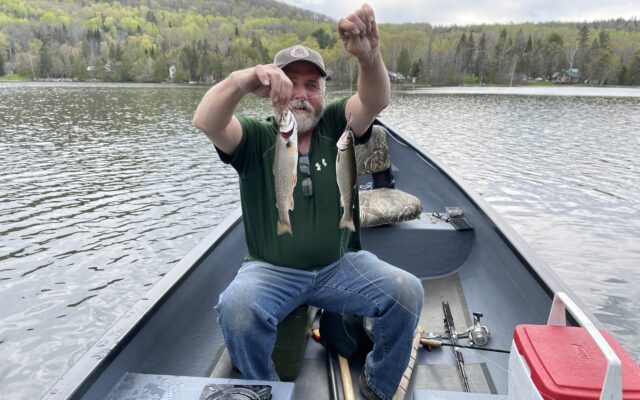
I was in my mid-20s, having fly fished for well over a dozen years, when I first learned about a dropper rig.
A half-dozen friends and avid fly casters flew from Bangor to Bozeman, Montana, to experience wading and drift boat fishing rivers and float tube casting on lakes. We enjoyed steady catch and release of rainbow, brown, cutthroat and golden trout on renowned rivers like the Madison, Gallatin, Big Hole, several Yellowstone Park waterways and Hebgen Lake.
Most of the fish boated and released were hooked using a two-fly dropper setup, the guides tied into each of our leaders. It was a whole new experience for all of us, but once we learned how well it worked it didn’t take us long to learn to make our own two-fly dropper rig. The depth and speed of certain pools, and whether we were wading or casting from a drift boat, determined what fly combination worked best. The season of the year, time of day and current insect hatches also played a big part in fly selection.
We mostly used a dry fly with a nymph dropper, but a few stretches of river and float fishing the lake called for a dry fly and wet fly dropper combo, and even a wet fly with a nymph dropper on occasion. While it’s obvious when trout rise to gulp a dry fly on the surface, an underwater take on a wet fly or nymph may be very subtle, unseen and unfelt for a few seconds, allowing the fish to spit the fly.
A nickel-sized, fluorescent-hued foam float with self-stick adhesive easily attaches to the leader as a strike indicator. When this bright, easy-to-see float stops moving with the downstream current or suddenly ducks beneath the surface, a fish has grabbed the nymph or wet fly. An alert angler can quickly set the hook before the fish drops the fly, realizing it’s fake food.
It takes a bit of practice to alter casting motion from a single fly to a double fly dropper rig. Mostly the fisherman just needs to keep the rod tip high and slow the backcast a bit to accommodate the slight weight change. Follow-through on the forward cast allows both flies to straighten the leader and stay separate as they lay out lightly, cross current on the water surface to start their drift.
I brought this two-fly tactic back to Aroostook with me and have enjoyed excellent results, especially on high-water, early season outings using a wet fly and nymph. Casting backwoods brooks during August’s hot, humid weather, a floating grasshopper with a small, colorful wet fly dropper perks up the action. Adjust the length of dropper line to 12 or 18 inches for smaller, shallower waterways.
Perhaps the greatest asset to my regional success with a dropper rig has been during spring trolling season. I figured that if two flies increased my odds and upped my action in Montana, it would work in Maine. But while casting a dropper rig worked the same in both states, trolling was a problem; the tandem streamers on the connected leaders kept getting tangled. It took me two spring seasons to finally solve the problem, and I’ve used the technique with great success for over 30 years.
It was sheer luck that while perusing the aisles of a tackle shop I spotted a package of triple swivels. I’d never realized such a thing existed. Using a small single swivel to attach a dropper leader and streamer from the main leader reduced tangles somewhat, but the triple swivel eliminated my problem. I knot one eye to my main leader from my trolling line, then tie a separate leader to each of the other two eyes.
One extension leader is 9 feet long and the second is 4 feet, and I crimp a split shot sinker 18 inches above the fly. The small sinker keeps the short leader and steamer about 8 to 12 inches deeper in the water than the longer leader and fly. Not only does this prevent snarls, but each streamer trolls at a different depth. To entice fish even more I use one bait fish imitation and one colorful attractor pattern for variety, Once in a while the ultimate reward is a fish on each fly at the same time.
When low, warm water causes trout to school in large numbers at springs and creek inlets, I’ve even tried casting two dry flies at once. A friend trolls Rapalas on a spinning or spin cast rod and reel after ice out. He ties in a dropper rig with a streamer fly three feet in front of the lure with steady results.
The recent incessant rains have kept waterways cool and high, offering consistent trolling. Take advantage of this extra time to learn about and experiment with a dropper rig. I guarantee that not only will it be an interesting change, but you will catch more fish, no matter if you are in Maine or Montana or any other state.







